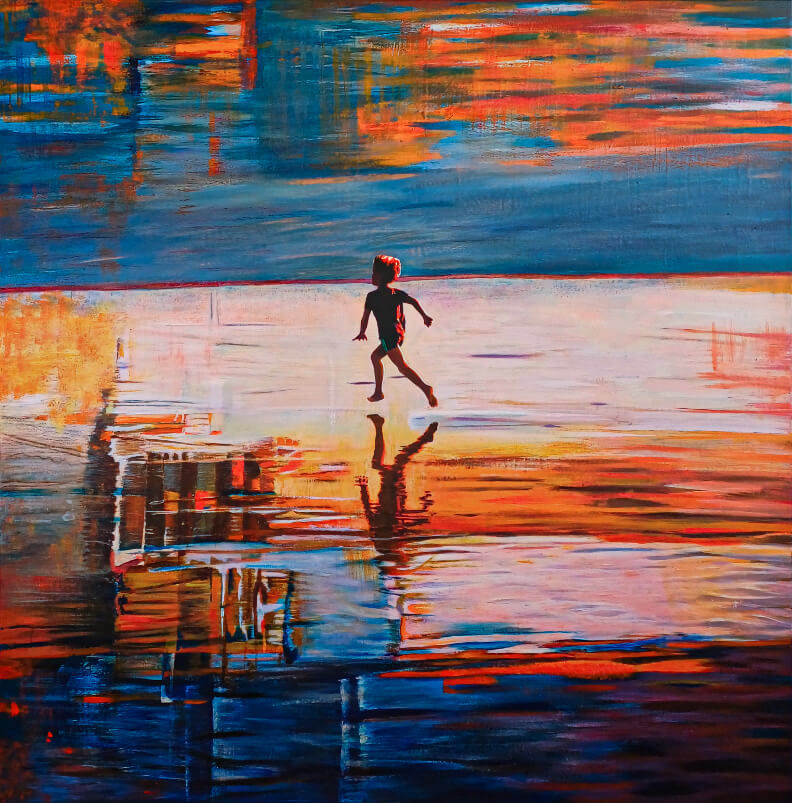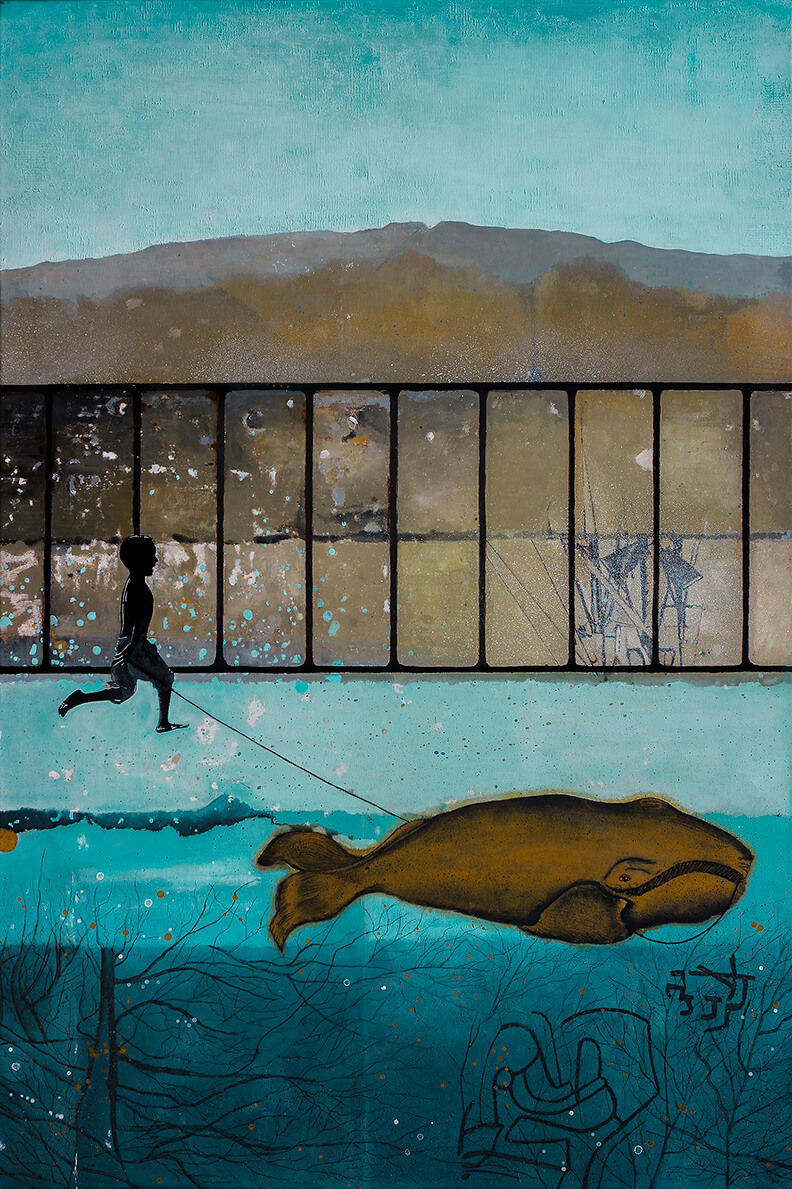The beauty of weathered art – 5 perspectives on art that moves us
- dbwaterman
- Jun 15
- 4 min read
Updated: Jul 27
What exactly is it that makes a work of art unforgettable?
Is it the perfect representation of an image, the harmony of colors, or something else entirely?
For many people, it is not the smooth or polished image that lingers, but rather the rawness, the weathered art layers, the traces of time and imperfection. Raw beauty – a peeling wall, a landscape where silence reigns, a figure alone in space – often touches something deeper.
In my work as an artist, I explore this aesthetic of transience. My paintings often depict deserted landscapes with lonely figures, constructed from collages, paint, weathered textures, and urban elements such as scratches, paint residues, or sometimes graffiti-like words. No clear street scenes, but rather an urban echo: remnants of the city that once was or an emerging industrial development that threatens nature.
In this blog, I take you through five themes that recur in my work and in the way people experience my art. Each theme touches on that weathered art beauty – and perhaps you will discover which one appeals to you the most.
1. The appeal of weathered art and textures
Why are we so fascinated by old walls, peeling paint, or surfaces that feel weathered?
Because these rough textures carry a history, a story. They have not been smoothed out, corrected, or embellished, and that is precisely what makes these surfaces so credible and authentic in their appearance.
In works of art, these layers can be used very effectively as a symbol for what is not spoken, but felt.
2. The silent presence of lonely figures
I place people in all my artworks. Because a person in a painting creates the story. A figure, often alone, sometimes together, in a deserted landscape, raises questions. Who is it? Where is he or she going? Many people feel unconsciously connected to that loneliness—not as something negative, but as something recognizable. Silence and solitude have become rare in our busy world. In my work, I try to bring that back. To show the beauty and tranquility of a vast and silent landscape.
3. Wabi-sabi: the beauty of imperfection
The Japanese philosophy of wabi-sabi revolves around the value of transience and imperfection. This is exactly what appeals to me and what I try to incorporate into my artwork.
In much Western art, there is a tendency toward control or perfection. Not only in art, but also in music, for example. But it is precisely that which is imperfect—a weathered surface, a crack, a stain, a lost word—that can feel much more human and touch you or make you think.
I often work intuitively, allowing chance and the material to be spontaneously added to the creative process.
4. The power of emptiness in composition
Emptiness in a painting is not always ‘nothing’. Emptiness provides space for breathing, rest, and reflection. The viewer can project their own feelings and images into the emptiness.
In my landscapes, I consciously use emptiness as a carrier of meaning. Not everything has to be full or present. Sometimes omission says more than filling in. In a time when everything is fast-paced and busy, an empty space on a canvas can be a place of rest and a form of freedom.
5. Why we find comfort in weathered art landscapes
Art can offer comfort without explanation. Vast weathered landscapes with a rough edge do not evoke cheerfulness, but rather tranquility or inner silence. And often a sense of recognition, because most people have encountered such an image before.
I often hear from people that my work touches them, without them knowing exactly why. That may well be the magic of art: it speaks a language without words.
In conclusion
Raw, weathered beauty in art is not the opposite of beauty—it is another form of it.
Perhaps one that you do not immediately understand, but you can feel it. And learn to appreciate it through the story behind it. In my art, I always seek out the layered tension: between vulnerability and strength, between silence and presence, between decay and meaning. My artworks are always a contrast of layers.
Are you curious to see how these themes come to life in my work?
You are always welcome to visit my studio gallery at Strijp-S in Eindhoven, or take a look at my online portfolio.


















